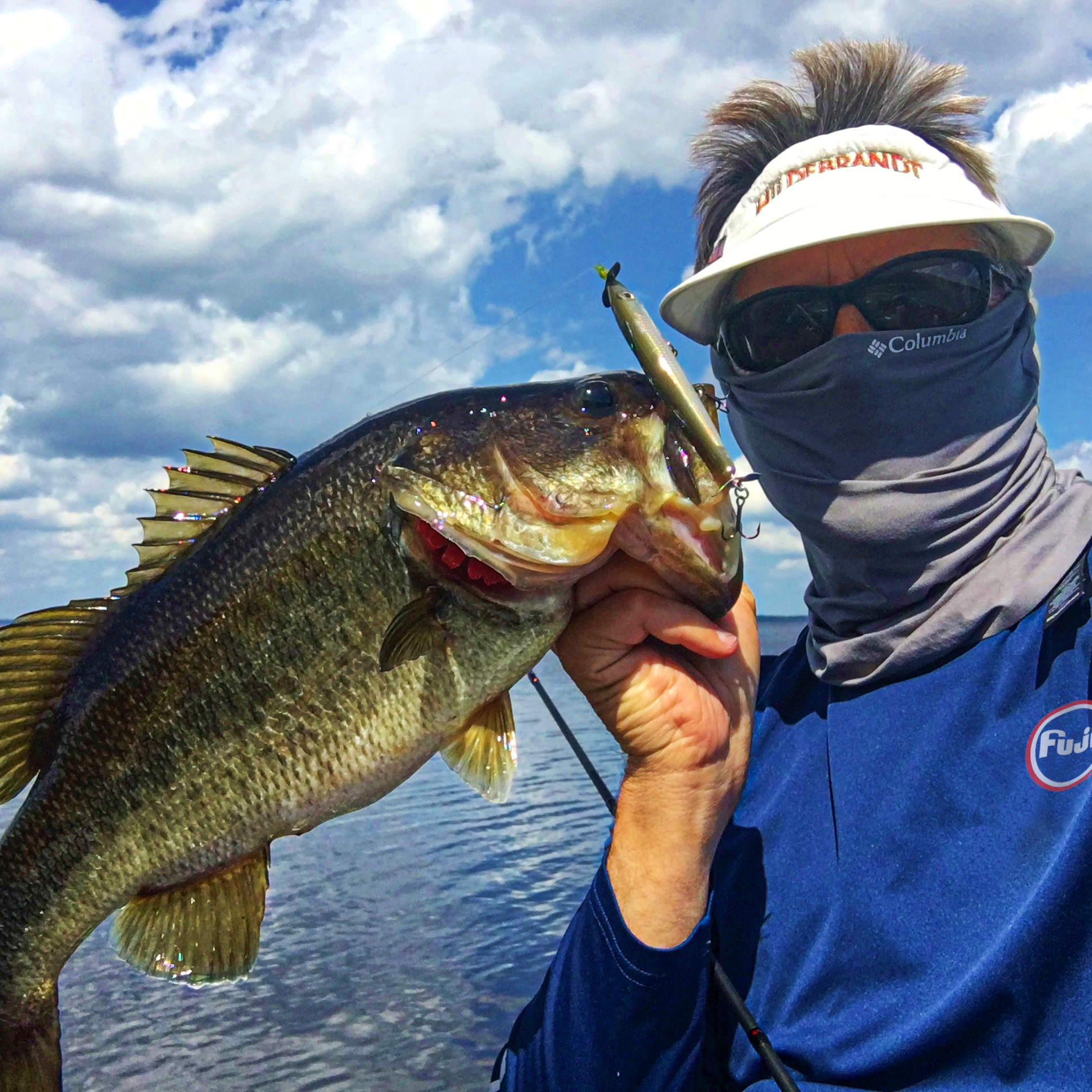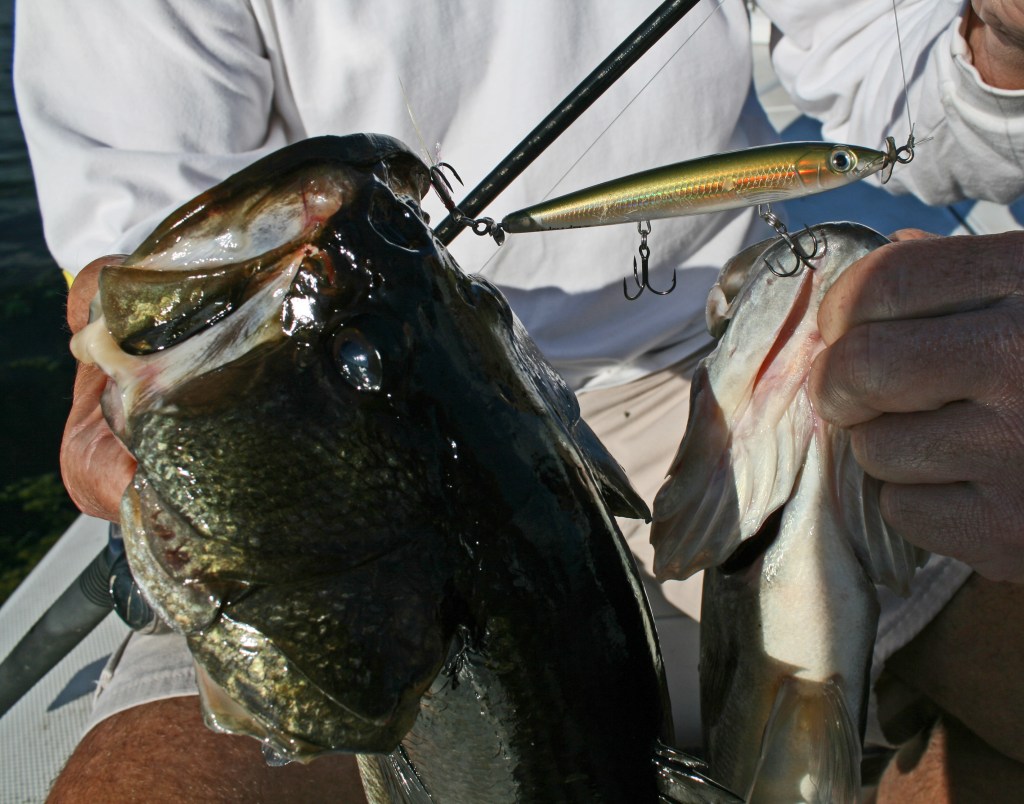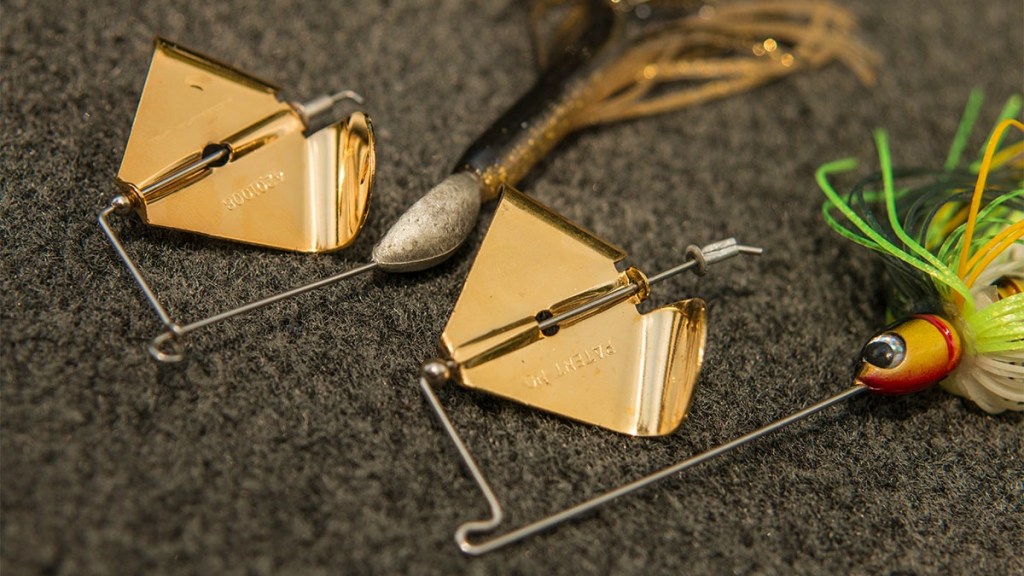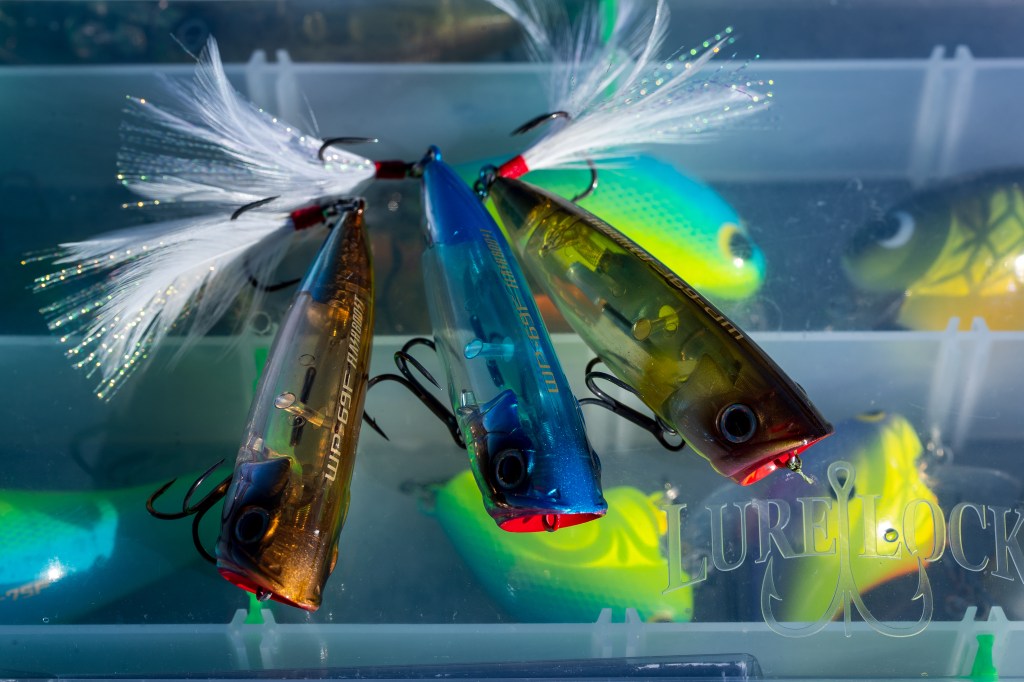
If you’ve been following the Bassmaster Elite Series this season, you know topwaters have a played a significant role in several events. Among them were the Harris Chain, St. Johns River and lakes Murray and Wheeler.
Although each body of water is drastically different from the other, a common thread in all was how various surface lures produced quality catches for a number of competitors — in some cases the majority of the field.
On the Harris Chain, topwater toads were a factor … not on every lake in the chain, but some. At the St. Johns, prop baits were the go-to. In fact, they accounted for the bulk of my catch.
At Murray — where schooling bass were the focus — walking baits prevailed. On Wheeler, buzzbaits and toads again got the call. Not only did I rely on them, second-place finisher Ray Hanselman did as well.
When and why
Knowing when to apply various topwaters seems like a gift for some. They instinctively recognize the opportunities to make them work. For me, it’s more trial and error. I like topwater fishing so much, I always try to make them work wherever the tour takes us … and for good reason.
Topwaters have the potential for catching the biggest fish on any body of water — even under bright, bluebird skies.
Whether it’s the subtle slushing sounds of a prop bait or the clatter of a noisy buzzbait, quality fish are frequently provoked into striking with reckless abandon. And that’s true for all types of topwaters — including poppers, chuggers and wakebaits.
Rain or shine, so long as there’s reasonable water clarity, topwaters can work. They may not be the most productive lure in terms of quantity, but they may be the best choice for quality. In many cases it’s a matter of patience and perseverance — giving them a chance to perform. And that’s where many anglers fall short. Either they lack confidence or they won’t dedicate the time.
The how to
Depending on the type of lure I’m throwing, I usually have a basic retrieve in mind … at least to start. I’ll begin with that, until the conditions or the fish dictate otherwise.
Take poppers for instance. If I’m trying to catch bass during the shad spawn, I’ll make the lure spit and slide across the surface at a fairly quick pace. If that fails to produce, then I’ll slow the retrieve by popping it more and using longer pauses.
Let’s say we’re using a prop bait. What then?
I work prop baits slow most of the time. Yeah, there are occasions when I may want to move the lure more quickly, like when fish are aggressively feeding. But that’s a situation usually reserved for lures featuring a single tail prop. I’m not sure why, but they seem to perform best when a brisk retrieve is required. Most of the time, however, I’m using a much slower cadence.

My presentation goes something like this; I’ll cast past or to the target area, then let the lure rest for a few seconds. Once the splash rings have dissipated, I’ll then give the lure two short pulls — just enough to get the props turning and no more than a foot per pull — then I let the lure sit again. At that point, I feel I’ve alerted any fish in the area to its presence. Then it becomes a matter of patience, allowing the fish a chance to approach the lure and waiting for its reaction.
Some days they’ll explode on a topwater as soon as it hits the water. Other days it may take pauses of up to 30 seconds or more to make them bite. And that’s when patience and perseverance pays.
Buzzbaits are different. To maximize their potential, it’s a matter of choosing the right size, sound level and retrieve speed.

For example, I usually go with a 1/2-ounce clacker-style buzzer when I’m dealing with grass, flooded brush or super aggressive fish. Conversely, squeaker-type buzzbaits offer a more subtle approach, and they seem to shine in sparse cover or around docks and laydowns. I suggest starting with a 1/2-ounce size, then dropping to a 1/4 ounce if needed.
For toads, it’s less about sound and more about movement and speed.
Most often a brisk, steady retrieve is best. Other times you’ll need to slow it down. If the fish are sulking and lethargic, a fast-moving frog can force a reaction strike. If they’re biting well, a slower retrieve can help them zero in on the bait.
Again, trial and error is often required to determine what’s best. And don’t neglect to vary the look of your topwaters. Bright, reflective colors are good when fish are aggressive or zeroed in on a specific baitfish — subtle, more natural colors can be good when the bite is slow.
Topwater tools
If I’m throwing a prop bait, popper or smaller walking baits, my preferred setup consists of a 6-foot, 10-inch Shimano Expride casting rod in a medium action with a 150 size Chronarch or Metanium reel. I spool them with 15- to 17-pound mono, depending on the density of the cover or the size of the fish.

Regardless of pound rating, I want a line that floats, and that is why I avoid braid or fluoro for slow-moving topwaters.
For buzzbaits, toads and bigger plugs, I go with a 7-foot, 2-inch Expride in a medium-heavy to heavy action. I use the same casting reels, but spool them with either fluoro or braid depending on the situation. If the cover is super thick or the fish are big, I’ll go with 30-pound PowerPro Super8Slick V2 braid. Otherwise, I’m usually throwing Mastiff FC fluorocarbon in the 16- to 20-pound range.
These are my preferences, and they may not be suited to your needs. Consider your body size and adjust the length of the rod you choose accordingly. And if you do opt for a different length, I suggest maintaining the prescribed actions above.
Surface summary
Regardless of the conditions or the type of topwater you choose, give it a chance to produce. A few casual casts here and there won’t get it done. Commit to it … and try switching baits and presentations before giving up. There’s a good chance some type of topwater will work, if given the opportunity. One thing is certain; if you choose the right lure and commit enough time and effort, you could easily fool the biggest fish in the lake.
Big bass eat topwaters! It’s just that simple.
Follow Bernie Schultz on Instagram, Facebook and through his website.





